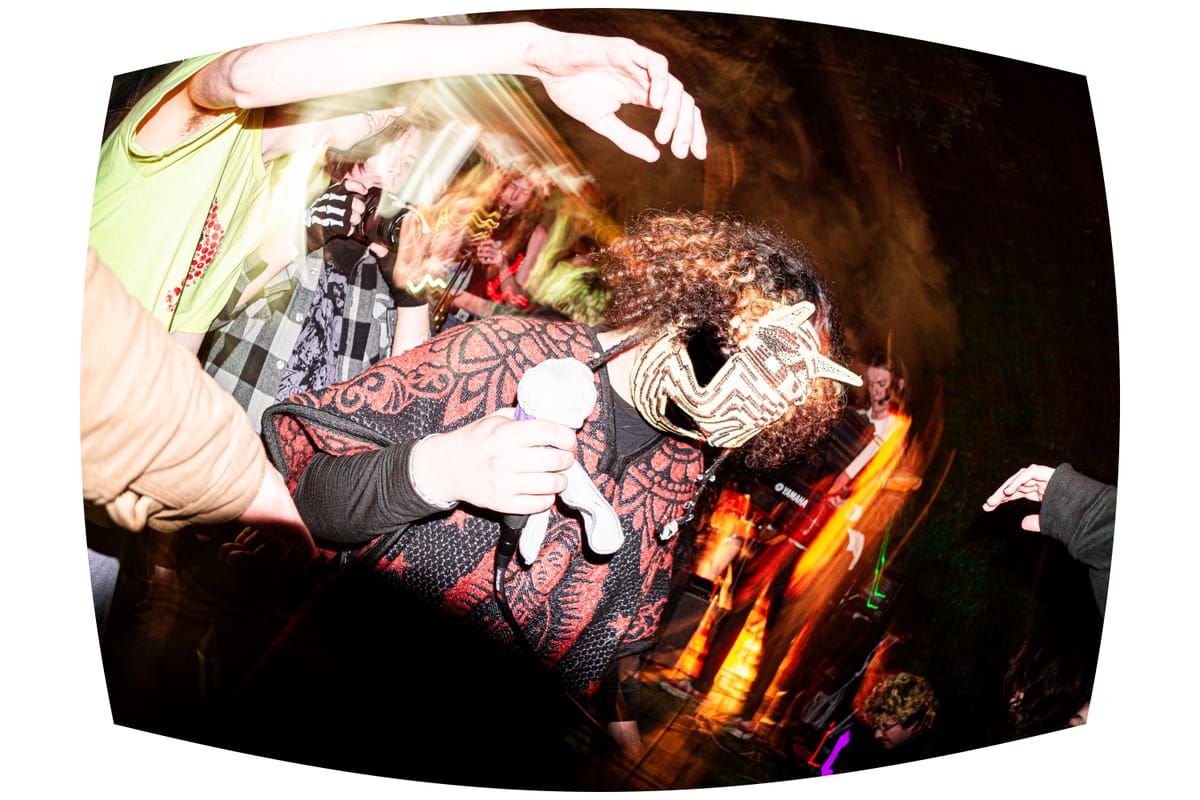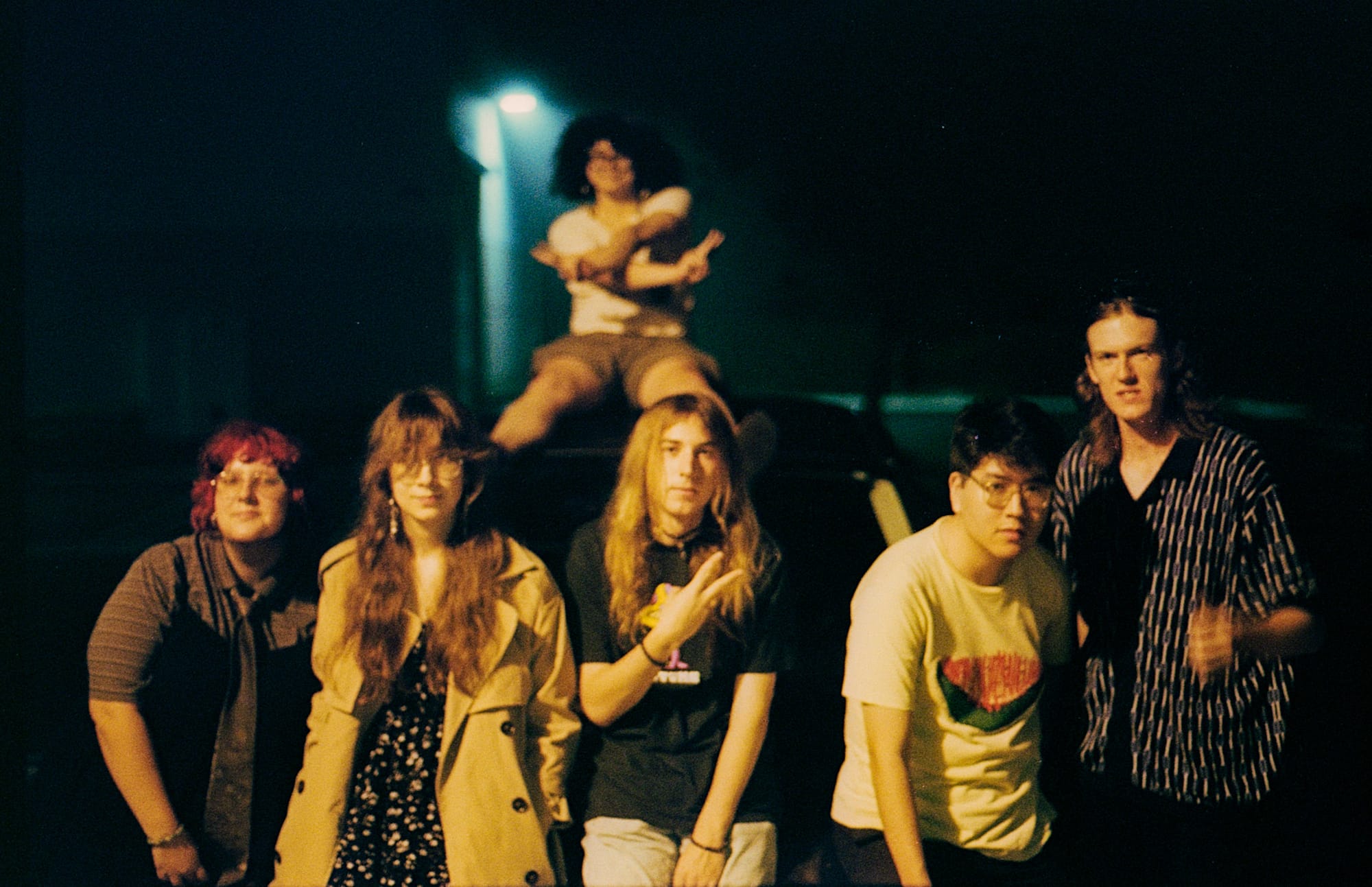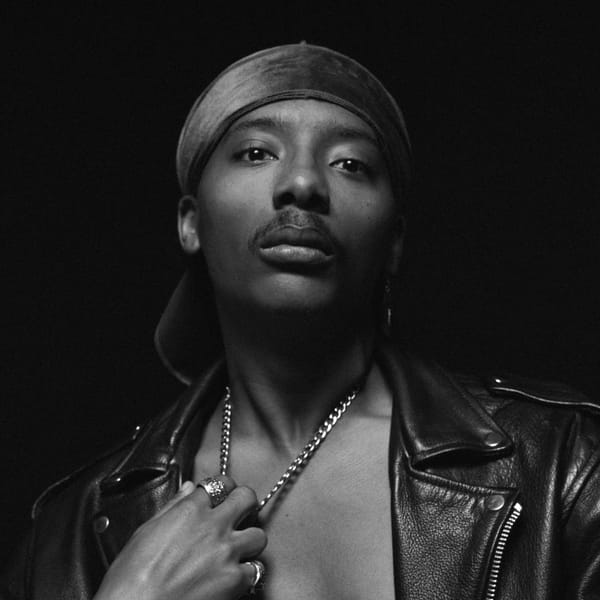Monty Cime discusses the syncretic nature of Cime
"I have always felt like if you're going into live music trying to replicate the studio sound, then you failed. You don't understand what the medium of live music is for."

One of my favorite recent musical discoveries is Cime’s 2024 album, The Cime Interdisciplinary Music Ensemble – a hugely ambitious album with multiple contributors playing a wide variety of instruments (bass flute! djembe! cowbell! trombone! a French press!) and sampling a wide variety of genres (jazz! folk! post-hardcore! emo! tropicalismo!). It’s the kind of album that immediately pulls you into its orbit; right away, you can tell that there’s nothing else quite like it. And if for whatever reason you don’t trust my endorsement of the album, last year Rick Carp of Rolling Stone magazine cited it as his favorite album of the year.
To be clear, Cime is not just vocalist Monty Cime, nor does she necessarily consider herself its bandleader / central figure. One of the core tenants of Cime is that art is bigger than any one person, because all art is a convergence of numerous life experiences, outside influences, and personal stylings. “I think everyone in some sense is collaborating with each other when they make art,” Monty explains over video call. “I think people can influence you whether they're directly involved or not, and saying someone is in the band or they're not is kind of like…it's just a constructed reality.”
Monty first made music under the name Syzygy – the term for when celestial bodies sync up with one another – and now packages all of her releases into “Syzygy Records” on Bandcamp. She chose that name because it embodies her ethos about art; it’s a continuation of the idea that all art syncs up in unexpected ways.
And you can hear all that syzygy at work throughout Cime’s catalog. The Independence of Central America Remains an Unfinished Experiment is a confluence of “70s Nueva canción / Anglo Folk Revival”; Laurels of the End of History is an art punk post-rock “Latin party megamix cassette”; the song “DIYUSA” is a "Punta no-wave song." Cime is, ultimately, a testament to artistic collaboration, a celebration of diaspora, and a confirmation that we can all create something meaningful and beautiful with one another.
Monty sat down with me to talk about Cime, and the interview kicked off the way most of my interviews start: with me trying to convince everyone to come play in New Jersey.
…and so like, if you ever come out to play on the East Coast, there are a lot of really cool DIY venues in North Jersey. People come through and play cool shows in New Brunswick all the time…
Oh, that's good to know. I have a lot of friends out there, so maybe we'll fly out there and then just figure it out. Maybe by the time we get the next one released.
Oooh, the next one? You’re working on a new album?
Oh, yeah, yeah. We’re probably gonna have a single out either by the end of this year, or maybe, like, January. Gonna be recording with Daisy Flora & Joan McKewon of the band Rx.pinknoise. They're like, San Diego hardcore transgender acolytes, and I think they are one of the best acts in the entire region at the moment.
Are you working with a lot of the same musicians who were on Interdisciplinary Music Ensemble?
Yeah, I would say so. Maybe a few different choices for percussion this time around, I don't know yet.
Do you view Cime as a rotating collective, like a Broken Social Scene type of deal?
Sort of. Well, every record has had different people on it. The first one, I basically did almost everything, with a couple of exceptions. And because so much of it was me, I felt like someone doing something was more of a “featured artist” type of deal. But really, I've always had the sense there would be more.
After the first record, I clarified – this is not just a solo project. It's a call and response sort of set up. I'm writing the songs, but they become something totally different live. And in that, they kind of take on their own character based on the people and their own preconceptions and their own ideals as instrumentalists. And I try to facilitate that communication and that openness.

I'm glad that you brought up the live performances because I listened to [the 2023 live album] Frida and the Filibusters Bid Farewell and Fall Asunder, and in the liner notes you wrote: “Live albums have the tendency to be viewed as supplemental material for fans, but Frida and the Filibusters is essential listening.” What made you want to stress that it's not just a footnote in Cime's catalog?
Well, I think part of it has to do with musical tradition. While there's a lot of different influences going into it, I guess we're a rock band first and foremost, right? And I think that, especially within the rock and roll tradition, people see live albums as just like, "Well, these are the same songs, but a little worse." Whereas in jazz and in folk, those are essential albums.
For example, the difference between a live jazz record and a studio jazz record. [On the studio record] they’re not doing this crazy production, it’s just them. They have the compositions and they're improvising. They're playing off of each other. There’s a sense that when you're listening to a studio album, there isn't a reification of a song. So, a live album becomes a different album, right? A different interpretation of the same catalog.
In a sense, in live performances I'm just playing my own songs in accordance with the lineup I have and what that entails. And for that record, we had seven people on stage, and a lot of them were newer, so they weren't as willing to be the lead in some of these parts, right? So it's this transitional stage. It's a moment in time. And that's how I see the process of playing shows live. Everything is in transition. You're communicating something relative to the audience.
And sometimes when we have a crowd that we know won't “get” it, we kind of, like...we don't throw the show exactly, but it’s like, if we can't make them like us, we should at least strive to make it hard to ignore us.
Have you ever had an audience surprise you? Like, maybe you thought they wouldn't get it and they did, or vice versa.
Yeah, totally. Totally. I mean, we've played kind of skeevy bars in more conservative areas. And I can't speak to how they view me as a person, but they were like, so into it. They wanted to buy me drinks after. That was so cool.
But you know, there's that closed mindedness of someone older stuck in their ways, and then there's the closed mindedness of someone who's like, “I just want to go see a grind show in someone's backyard cuz I have nothing else going on,” or “I just want to drink and go watch some shows with my friends,” or something like that. And so, when we find that they're not really there to listen to the music, it's weird. But it's fun, right? I think that sometimes an antagonistic relationship with the audience is something worth exploring. I don't actively resent them for not being into it, I just then have to play a different character on stage for different crowds.
A character on stage is an interesting way to put it…who is the character you find yourself playing? An exaggerated version of yourself, or someone else entirely?
I mean, it's in flux. I've kind of dug my own hole with this insofar as I've named the band Cime, but ultimately people are always going to perceive me as this centralizing figure, and I don't think that's fair to me or the band. I think I actively started to internalize, like, “maybe this is a bit diva-ish of me.” And I don't want to have that, I think it detracts from the music. So I started wearing this mask!
It's a Panamanian owl mask. The animistic qualities of native practices have always been really interesting to me. And a part of my culture in Honduras, you see a lot of Afro-Indigenous dances from the Garífuna on the coast - especially where my family is from - adapting this and taking on the animalistic qualities. But for me, the mask is about decentering myself as the person, as Monty Cime. Cime has kind of grown from a solo act into an embodiment of everyone contributing to Cime; as this tribal kind of communal performance.
That decentering of the face, making it so you can’t be watching me and my expressions, it kind of reminds me of the kink community stuff, too. Where they wear the mask so that it's like, you are just kind of part of things going on, you don't have to worry about how you look. You can kind of just like, melt into it. And that means that I can do weirder things with my body, and not have to worry and be like, “do I look stupid?”
Does anybody else wear a mask or costume or anything like that?
I don't think so. But it's weird because when we had eight or nine people, everyone was always dressed so differently, so it just looked like...well, we looked like the Village People, frankly. I was wearing the mask and then Maya [Hoss], the sax player, would wear a crop top and jeans and these old ass battered tennis shoes. And then Riley would dress to the nines, dude. And then we had Joe [Joseph K], who always dressed like a cowboy. We had [bassist/vocalist Jonas Phipps] dressing more grunge. [Anderson Myers], our drummer, that guy just wore anything. He would do the Japanese [hakama] look and then, like, an Under Armor shirt.
So it's a visual treat. There’s no uniform, it's just us.
I do love that. And that kind of ties in thematically - blending together these seemingly disparate styles and influences on stage every step of the way.
Totally. I hadn't thought of it like that, but yeah, you're absolutely right in that assessment. And I think, especially in terms of building off of each other…I want this to be, like, a living biography of where we're at and where we're at in response to where we were before; everything is kind of in response to that first record.
But also, I think more broadly, what I'm into right now has more to do with what I was into before and what that means to me now. My drummer, Anderson, he once said that everything [I’m] into is very iterative and very much conscientious of contributing and being a part of and building off of musical traditions. And so, for me, it is about that conversation. It's not about my legacy, you know, because I can't speak to what people are going to say about me in ten, twenty years. But I want to see a bigger picture where it’s like…what will what I'm doing right now mean in forty years?

What would you like it to transform into next? Or is that something you can’t quite pin down yet?
You know, that's kind of the problem. Things feel almost suffocatingly open ended.
I want to make an album as opposed to a collection of songs, you know? For this next one, I want to explore the realms of hypnagogia. And to explore the realm of radio broadcasts of DJ mixes and how they operate as a sort of presentation, especially within Latin America. And spend time exploring the memory of a memory, the lost history that never came to be and, you know, the kind of syncretic nature of Cime - as me and of the band being this thing that exists in between worlds. That's what I'm especially interested in. A lot of Cime has been about drawing from and drawing attention to these interesting little branches of syncretic musical history.
Can you tell me more about moving away from a “collection of songs”? Are you aiming for it to read as a DJ mix then?
Sort of. It’s about the composition, I think. An album I'm looking to a lot in terms of the structure of the songs and of the songwriting is The Brave Little Abacus’s Just Got Back From the Discomfort—We're Alright. Where they have the outros fade into the intros of the next songs, and then half the song is just an outro with the horns, and then they extend that outro into the next one. So in a sense, the track numbers are kind of just arbitrary; it feels a lot more freeform.
Yeah, yeah, I get what you mean. And it feels like they just sat down and did it all in one go.
Yeah, totally. And that just takes time, to build that kind of comfort with the group. But I feel really confident in what we're putting together.
You talked about the live shows taking on a form of their own. Similarly, do you find that songs you wrote take on a new life once you get into the studio?
No, we're pretty put together when we get in. The result of going into the studio is closer to the writing process, whereas the live performances are so dependent on many, many, many different factors. Those are the ones that take on a life of their own.
And that's the beauty of it, right? It's like two different bands, really. Because I have always felt like if you're going into live music trying to replicate the studio sound, then you failed. You don't understand what the medium of live music is for. And actually, for me, the studio records are almost just a checkpoint for us to then experiment with them live.
Oh, so it’s like the albums are just a teaser for the shows, in a sense.
Totally, totally. We're like the Grateful Dead, I guess. And we want to go play the East Coast!! We're itching, bro. We're itching.
Pleeeeeeease do, and don't forget about little ol' New Jersey...! Okay, is there anything that you want to plug before we wrap up?
Yeah, I have something. So my friends Maya and Riley, they're two trans women and they're doing some really cool stuff right now. They're a free jazz, free improv, experimental duo called Spirit Assembly. And they have some records out. They're usually releasing live recordings. They just put one out. I went to go see them at this random punk house in Rialto, which is in the Inland Empire, and it's just really, really cool what they're doing. They're my friends and I love them, so I have to shout them out.
Check out Cime on the Syzygy Records Bandcamp page, check out Monty's website and Monty's blog, and follow Cime on Instagram.




